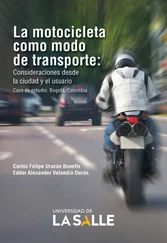He was playing again that ending of the Carnaval ’s first part, running through the rapid dog-chases-cat section that rounded up in that magnificent conclusion. He seemed to like that and spoke about it, but I was paying no attention.
. there is no motion, but physicists are too timid to admit this. It is this timidity that makes them give up so easily at the first setback. They experimented with light and without bothering to ascertain its nature and, with the least-founded assumptions about that of its propagation, became utterly demoralized because the results of their experiment were negative. One of the most disconcerting conclusions of the experiment was that light behaved as if the earth were standing still, which after all, it does since nothing is moving, but a conclusion intolerable to anyone donning a snobbish Copernican modesty as a necessary accessory to debunking progress — and they gave up too easily.
The fact that an experiment fails our reason should not disconcert one to such an extent, but only make one doubt the validity of the conclusions it implies and the things which it assumes. One might even consider light as an extension in a fifth dimension, which would account for its crossing all objects at the same rate regardless of their speed or direction. Who knows? Might be worth investigating this line of reasoning. Let us say that it crosses our four-dimensional field and the inclination at which it crosses it is what we measure as its velocity. From experiments, it would appear that this inclination is constant In short, they have not measured the velocity of light at all, but merely a cross section of it. Got everything upside down. Don’t know what it’s all about.
All this made me dizzy and I know that Garcia, who had been reading over my shoulder, often holding a page I wanted to turn, was flabbergasted. I was ready to give up, like a timid physicist. It was too complicated and removed from everyday experience, although the Moor did not seem to think so:
. quite simple. Add one more coordinate and the difficulties disappear — the complete panacea that cures all ailments of physics and philosophy. But I don’t think they want to take that medicine. They will swallow any other pill, assume anything but higher dimensionalities taken literally. They refuse to make this one fundamental assumption, but instead they assumed all kinds of ethers, when the fear of dimensions — a real case of logarithmic agrophobia that leads them to the most outlandish acrobatics on the parallels of the equality sign, in order to duck any exponent higher than the third — was the anesthetizing ether that rendered them totally incapable of seeing the obvious. They accepted non-Euclidian geometries — more mathemacrobatics on other pseudo-parallels — and produced many innocent and disarming little admissions springing coyly out of a hat like tame rabbits charged with some infectious virus. Everything under the spell of their favorite magic wand which by moving swiftly past our noses like an admonishing nightstick, changed into a stupefying blackjack — the well-known contracting rod, their most reliable weapon — when, on the contrary, one glance even at my little machine shows that it should grow long as a fishing pole with all its implications.
But speaking seriously.
This made me laugh and Garcia joined me, but I am not sure that we were laughing at the same thing. Nobody else paid any attention.
But speaking seriously, since what we call the length of an object is its three-dimensional section, it is clear that the length of this section varies according to the inclination of the cut, although inversely as they conclude. The real object, the four-dimensional object, remains the same. Nothing is moving, nothing at all. They are utterly confused.
By considering the limiting case — infinite velocity — one can see that an object would be all along the line of motion at the same time (its time extension stretched full length in our space); that is, elongated to the utmost, instead of shortened to nothing as they claim. They have got everything upside down.
All these elongations — or contractions if we accept them for the sake of not arguing — hold no mystery. We are all familiar with distortions in space of three dimensions. The most rigid body can be made to shrink, expand or become deformed simply by receding from it, approaching it or changing one’s position, and no one questions which is the real or apparent size and shape and the phenomenon causes no one, except perhaps a high mathematical physicist, the slightest perplexity. This is because we understand perspective, because we can interpret the third dimension.
In the same way, the fourth dimension involves distortions which appear as motion, elongations or whatever you please. It is puzzling because we have not conditioned ourselves to interpret the fourth dimension and understand its perspective, but there is no reason for calling upon special branches of mathematics or trick devices to explain something that an extension of Euclid can explain more concisely, naturally and convincingly.
I assumed that Dr. de los Rios knew all about these things already, but I was not sure of what he thought of them and I don’t think the Señor Olózaga was interested, but I felt and I am sure Garcia also felt that this concept of a motionless universe extending in undreamt-of directions was depressing. Possibly the idea was not difficult to grant, if not to conceive, as applying to all external happenings, perhaps even our dreams, all of which appeared to be independent of us, but when applied to our thoughts, to our decisions, our labors, our smallest motions, it seemed very difficult to accept. It conjured infinite, terrifying vistas of changeless destiny — our past and future spread out and coexisting, all foreordained, all inevitable and we pinned, held like flies in this endless spiderweb, or perhaps constituting some of its enormously long filaments. Regardless of any degrees of freedom through all these dimensions, it was a horrible prison, a prison from which there could be not only no hope, but no conception of escape, because it took in everything and one could not even have the consolation of dreaming of an outside or a future.
On the other hand, it appeared as tremendously dramatic that this extension, which might be but one single instant, should create that impression of enduring time, of all history, of all eternity. Only one moment, one flash, all at once, and yet our intuition of it so gradual, so slow, so protracted, creating the illusion that we contribute to creation.
It was at this moment that Garcia rescued me from these useless thoughts by asking the Moor how he became interested in these subjects. In a series of reminiscences shared with Dr. de los Rios and the Señor Olózaga, who had come momentarily awake, he told us.
There were memories of his stormy youth and a brilliant scene one night when, having returned from Ireland, he had conducted at El Real in Madrid one of the most magnificent performances of Gounod’s Faust ever presented at that venerable and critical opera house, when he inspired the musicians and singers to heights worthy of that romantic and significant opera. Then a concert with the Madrid orchestra where he made history with a capital rendition of Beethoven’s Third Symphony, by giving it full rein, letting it play itself, with warmth and turbulence, with serenity and piety, in those days when conductors could still do novel things with time-honored classics. He extemporized on the symphony.
The first movement: a complete thesis — strident and sentimental — sheer glory in all its aspects — a résumé of the whole program. The second movement with all the rotten grandeur of death, of green marble sepulchral dwellings and tearful lamentations. The third movement, a resurrection in memories of battles with horn calls suggestive of the hunt. Many conductors have been tempted to transpose these two movements because of misunderstood reverence for chronology. Beethoven’s musical instinct guided him unerringly to the proper arrangement. Not only to sacrifice an unessential chronology to musical structure and unity, but philosophically as well; to kill his hero at the outset and understand that death is the foregone conclusion in the life of a hero which implies it by definition. This was a stroke of genius which sees clearly the timeless pattern of destiny. The last movement: victorious soldiers marching and also rhythms and accents indicative of limping, wounded, tired, straggling soldiers stepping off, coming to roost at the roadside inns, to quench their many thirsts, especially that for life, after their long association with death. A symphony which is the greatest tribute ever paid to masculinity, a monument to men and their glory and the penalty of their calling. A tableau of brilliant uniforms and decorations stained with blood. A battlefield with bucolic reminiscences of love.
Читать дальше












